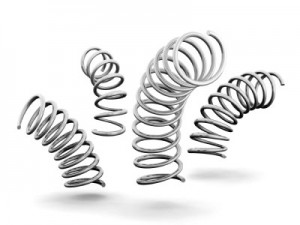 In the context of Google Analytics, the Bounce Rate Metric, also referred to as ‘Bounce Rate’, is the percentage of single-page visits to a website. For example, a 75% Bounce Rate would indicate that 75% of site visitors are leaving your site after visiting only one page. [1]
In the context of Google Analytics, the Bounce Rate Metric, also referred to as ‘Bounce Rate’, is the percentage of single-page visits to a website. For example, a 75% Bounce Rate would indicate that 75% of site visitors are leaving your site after visiting only one page. [1]
Although Bounce Rate is measured through Google Analytics and other software, psychological determinants lie at the root of this online behavior. The Usage and Gratification Theory (UGT) is an audience-centered approach to understanding why and how people actively turn to media (i.e. the Internet) to satisfy specific inherent needs, which fall into 5 categories: [2]
- Cognitive Needs: Gain knowledge and gather information
- Affective Needs: Generate positive emotions such as pleasure
- Social Integrative Needs: Meet the inherent need to socialize (i.e. social media platforms)
- Personal Integrative Needs: Build self-esteem by reassuring social status (i.e. social media platforms again)
- Tension-Free Needs: Discover means of escapism.
In regards to the Internet and corporate websites, the main idea behind UGT is that Internet users are not passive consumers; they decide which websites they like and which websites they don’t like. When they land on a website that they don’t like, they bounce right off, on their way to the competitor’s site.
So, ultimately it’s the user’s relationship with gratification that determines bounce rate. Organizations can apply as many of the latest in Search Engine Optimization (SEO) techniques as possible, but these attempts will fall short if they are not meeting the psychological needs of the user.
But how do corporations determine which of the 5 psychological needs their audience is seeking to fulfill? While applying Google Analytics and other website traffic metrics is necessary to determine the demographics and other attributes of site visitors, there is a fail-proof method that meets all psychological needs – navigation.
Regardless of whether site visitors are searching to meet affective needs cognitive needs, or any other need, if they encounter poor navigation, they will immediately bounce from the site. This makes user-centered navigation the universal solution for managing Bounce Rate.
How to Create User-Centered Navigation
According to Usability.gov of the US Department of Health and Human Services, [3] there are 12 key guidelines to effective navigation: *
- Provide Navigational Options: Do not create or direct users into pages that have no navigational options.
- Differentiate and Group Navigational Elements: Clearly differentiate navigation elements from one another, but group and place them in a consistent and easy to find place on each page.
- Use a ‘Clickable List of Contents’ on Long Pages: On long pages, provide a ’list of contents’ with links that take users to the corresponding content farther down the page
- Provide Feedback on a User’s Location: Provide feedback to let users know where they are in the Web site.
- Place Primary Navigitional Menus in the Left Panel: Place the primary navigation menus in the left panel, and the secondary and tertiary menus together.
- Use Descriptive Tag Labels: Ensure that tab labels are clearly descriptive of their function or destination.
- Present Tabs Effectively: Ensure that navigation tabs are located at the top of the page, and look like clickable versions of real-world tabs.
- Keep Navigation-Only Pages Short: Do not require users to scroll purely navigational pages.
- Use Appropriate Menu Types: Use ’sequential’ menus for simple forward-moving tasks, and use ’simultaneous’ menus for tasks that would otherwise require numerous uses of the Back button.
- Use Site Maps: Use site maps for Web sites that have many pages.
- Use ‘Glosses’ to Assist Navigation: Provide ’glosses’ to help users select correct links.
- Breadcrumb Navigation: Do not expect users to use breadcrumbs effectively.
According to the concepts of UGT, user-centered navigation means the difference between Gratification Sought (GS) and Gratification Obtained (GO) – the higher the discrepancy, the higher the Bounce Rate. Navigation makes meeting the psychological needs of all of your site visitors possible, thus keeping them on your site for longer periods of time, and increasing the rate of conversion.
*Information taken directly from usability.gov.
References


